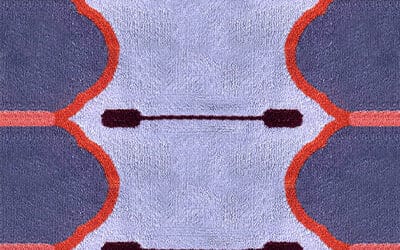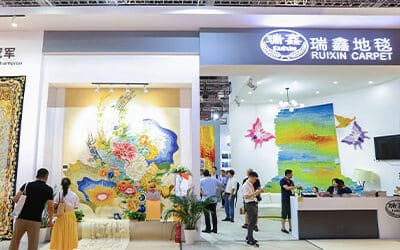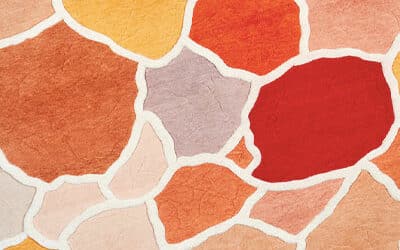Tall stands of the twin-needle Lodgepole Pine grow in dense forests throughout the western United States and Canada. Varieties are found on coastal shores, plains and mountains. The slender trunk of the high altitude pine tends to be sparsely limbed for much of its height as it jostles brethren for space and light until its crown bursts upwards. Ripe pine cones produce twin blade seedlings that twist and turn to the forest floor like helicopter rotors with just enough aerodynamic lift to distribute seedlings further to amplify germination potential.
The familiar and beloved sight of tall stands and thick capsule carpets on the forest floor inspired clients of interior designer Andrew Flesher to commmission “Lodgepole Cathedral” (2012) – a hand hooked 100% virgin wool wall hanging designed by Michael A.C. Christie and produced by his Canadian company Red Spruce.

“Lodgepole Cathedral”, designed by Michael A.C. Christie, Red Spruce Ltd. Photograph courtesy of Red Spruce Ltd.
Designed for the entrance hall of the client’s home, Christie worked collaboratively with the client who wanted Red Spruce’s “signature aesthetic” expressed in a design related to the landscape around their home and incorporating “their love of cubism”. Sketches were discussed and refined until the final design was agreed. “It was a really collaborative process” Christie says, “and the end result is better because of that”.
Christie’s concept was based on a photograph taken from the forest floor looking into the sky through the tree canopy. He explains his design:
“When viewed at a distance the design is clearly based on rectangles and triangles, but closer examination reveals subtle textures. The design of the sky is ‘softened’ by a curvaceous and flowing cloud-like texture and the ‘mountains’ are hardened by an intersecting cross-hatched texture, whereas the shape of the trees is reinforced by parallel straight lines, and the ‘meadows’ have soft flowing waves.”
While the influence of cubism is apparent, Christie’s tree shapes remind your scribe of the iconic and delightful cone-shaped tree roof of the Canadian Pulp and Paper Pavilion at Montreal’s Expo ’67, and the tapestry’s joyous colours bring to mind wonderful vintage travel brochures. Will the client and designer welcome your scribe’s somewhat more prosaic and popular interpretation of this wonderful tapestry? The Lodgepole Pine is symbolic for millions of people (including your scribe), and a popular culture interpretation adds another “variety” to the Lodgepole Pine “design species”. DJ




